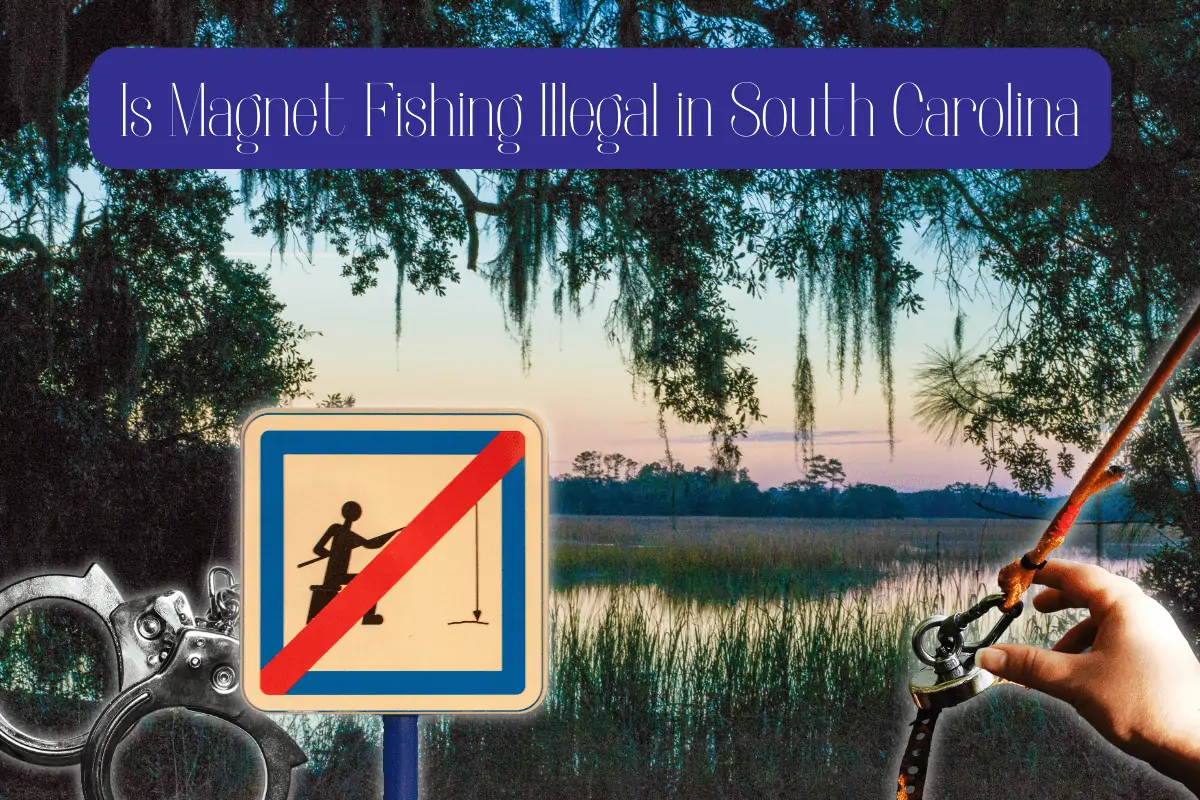Hot off the presses!
After my ‘what’s, why’s, and how-to‘ of gold panning for beginners, what better way to follow up than helping you pick your own spot to pan for gold?
This brings us to the great state of Texas.
While Texas is better known for cowboy boots, oil, and football, don’t discount an adventurous gold panning expedition.
So, without further ado, grab your rubber boots and sluice box, and let’s find you a spot to pan for gold in the Lone Star state.
Can I Pan for Gold in Texas?

You can absolutely pan for gold in Texas as long as you steer clear of the areas that are prohibited or require some further consent.
Unless you plan on getting the permission needed.
But I’ll get to that in a minute.
However, if it’s your first time looking for a place to go panning for gold in Texas, you’ll want to start by getting familiar with one of the local prospecting clubs.
They’ll have all the info on where you can and can’t pan for gold.
Club members are generally a friendly bunch. So feel free to start a conversation and pick their brains on any local panning hot spots.
A great resource to use is the GPAA Texas chapter’s contact page.
Otherwise, keep reading, and I’ll get you up to speed on the dos and don’ts of panning for gold in Texas.
Is Gold Panning Legal in Texas?

Panning for gold is legal in Texas as long as there’s not an existing mining claim on the land and it’s not privately owned.
If you pick a spot to start gold panning and discover it’s not public property, you must get permission from the land owner before continuing.
Otherwise, you’ll be subject to legal ramifications. And forget about keeping any gold you find.
Without prior approval, that’s not your panned gold to keep.
Can You Pan for Gold in National Parks and State Parks in Texas?

What about National and State parks, you say?
Like metal detecting laws in most states, Texas gold panning regulations are pretty lenient.
Small-scale gold panning in national parks is permitted without a permit by the United States Forest Service.
Suppose you plan on bringing in more extensive mechanical equipment, the chances of negatively disturbing the environment increase. This form of large-scale prospecting is not allowed in Texas national parks.
As for finding a spot to pan for gold in state parks, Texas allows prospectors to pan on state land; however, you must obtain a permit.
Do You Need a Permit to Pan for Gold in Texas?
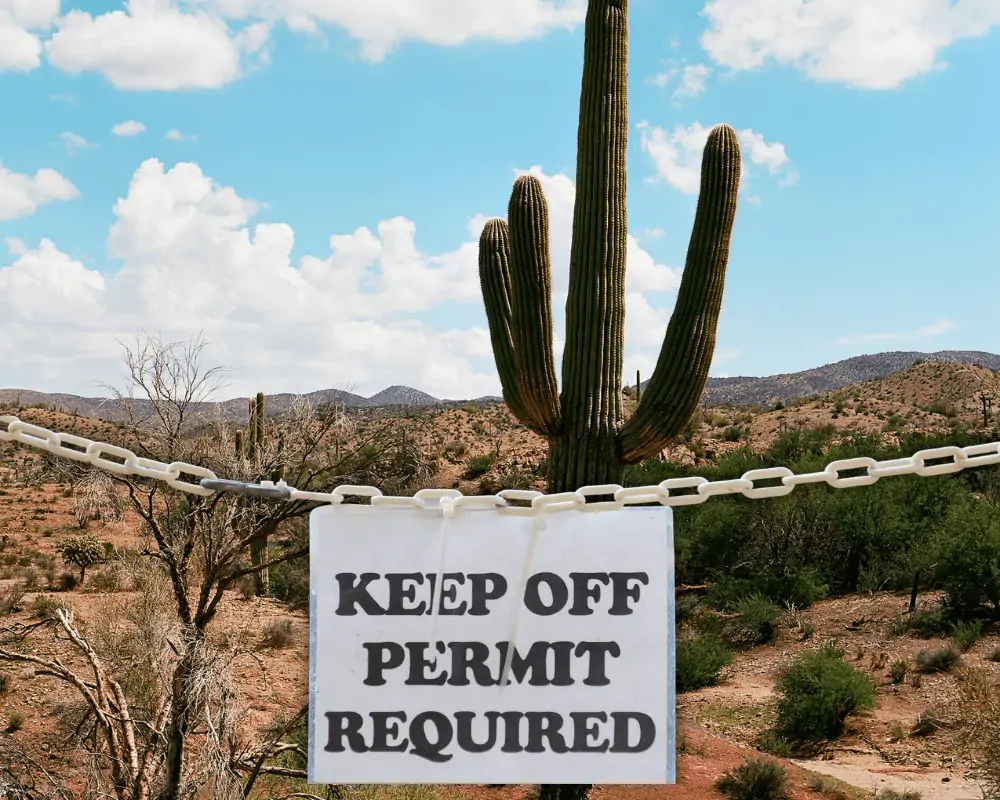
As I mentioned above, you can pan for gold in Texas, even if it’s on state land.
State-owned land is the only spot where a gold panning permit is required.
The General Land Office (GLO) will review and approve any prospecting claims submitted with the intent of panning on state property.
According to the GLO statute, as long as the desired site is not within 2,500 feet of a military base, the permit may be approved by the commissioner if no other claim exists.
If interested in applying for a permit, download the Texas GLO form and submit it for approval.
Do People Still Pan for Gold in Texas?

Since the time of exploring Spaniards and beyond the great Gold Rush, frenzied treasure hunters have searched rocks and rivers for any trace of gold to claim.
Texas, being such a large state, has surprisingly very little gold to be found.
Not to say there isn’t any at all. Panning for gold is still a thing, even in Texas.
You just have to be selective in the spot you choose.
Are There Gold Deposits in Texas?
Most gold deposits in Texas will preside along the Llano River and West Texas, bordering the Rio Grande.
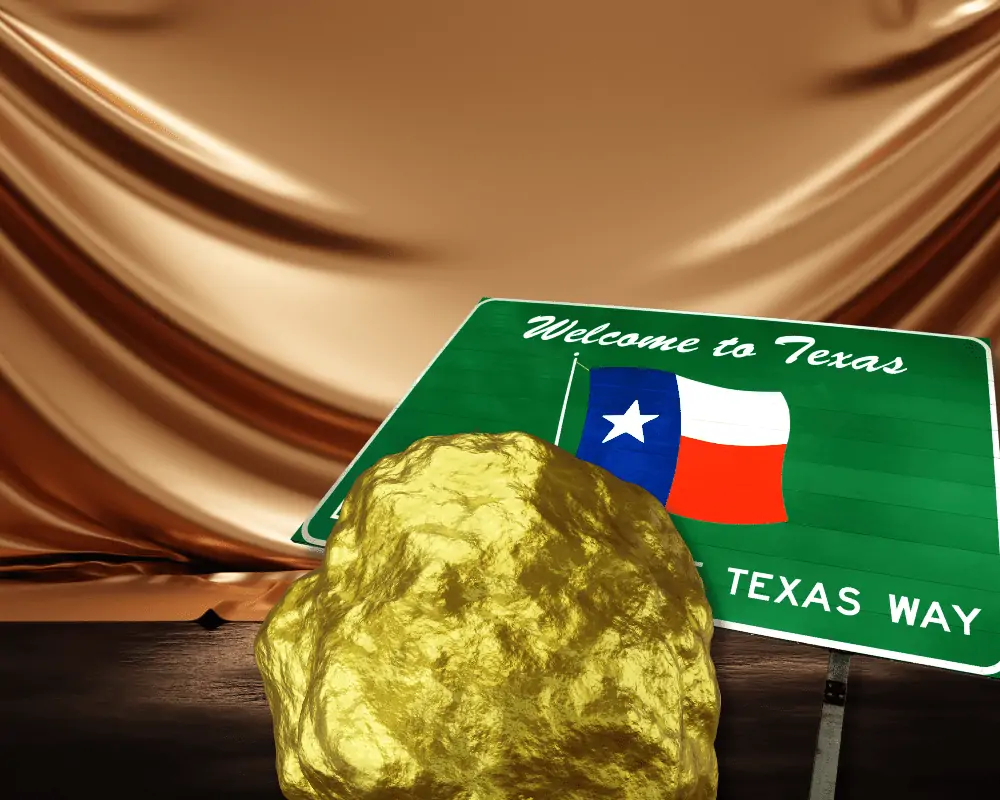
However, many panning enthusiasts search mountain ranges and flowing waters across all of Texas for gold.
With a quick Google search, you can find a list of all the gold claims made throughout the state.
Even still, whether mined or panned, gold is a limited resource in the Lone Star state.
In 1942, when the Presidio Mine in West Texas closed, the total amount of gold ever collected from the best-producing mine was only 8,277 fine ounces.
This amounts to a net worth of $233,499 in a 1942 economy. Today that would be worth almost $14 million.
To give you a frame of reference, in 1942, the state of Colorado mined 380,000 ounces of gold in a single year.
In 2022, that’s a net worth of $640 million!
How Do You Pick a Spot to Pan for Gold in Texas?

Picking a spot to pan for gold in Texas requires some research.
First, you should know the laws governing gold panning in Texas.
If you’ve decided to forego any permits or panning in restricted areas, take the time to examine topographic maps of public waterways for changes in elevation and paths through gold-bearing regions.
But be well-versed in the Gradient Boundary concept.
Gradient Boundary is an endorsed concept by the Texas Supreme Court that clearly defines the boundary line of flowing water from public to private property.
Without the knowledge of this concept, you could easily find yourself trespassing when panning your way downriver.
The next requirement for picking a gold panning spot is to ensure no existing prospector claims are found in that area.

This goes for public and private property.
While doing so, you can also use this information to target locations that other prospectors deem valuable.
Some options to use are:
- Bureau of Economic Geology Mineral Resource Map
- USGS Mineral Resource and Mining Data System
- Hudson Institute of Mineralogy’s mineral database (Mindat)
Finally, if you’ve found your spot to start panning for gold, get the necessary permission you need, if it’s required.
Where Can You Go Panning for Gold in Texas?

There are many places to go panning for gold in Texas. Still, the 6 best locations for success are surrounding the Quitman Mountains, Llano River, Shafter Mining District, Guadalupe Mountains, Honey Creek, and the Guadalupe River.
These areas have a known gold presence and draw many prospectors from around the state.
So, keep reading, and we’ll discuss why each spot should be on your list.
Quitman Mountains
In the northwest portion of Texas, running along the Rio Grande rests the Quitman Mountains.
The Quitman Mountains are home to several prospecting claims, such as the Bonanza and Alice Ray Mines.
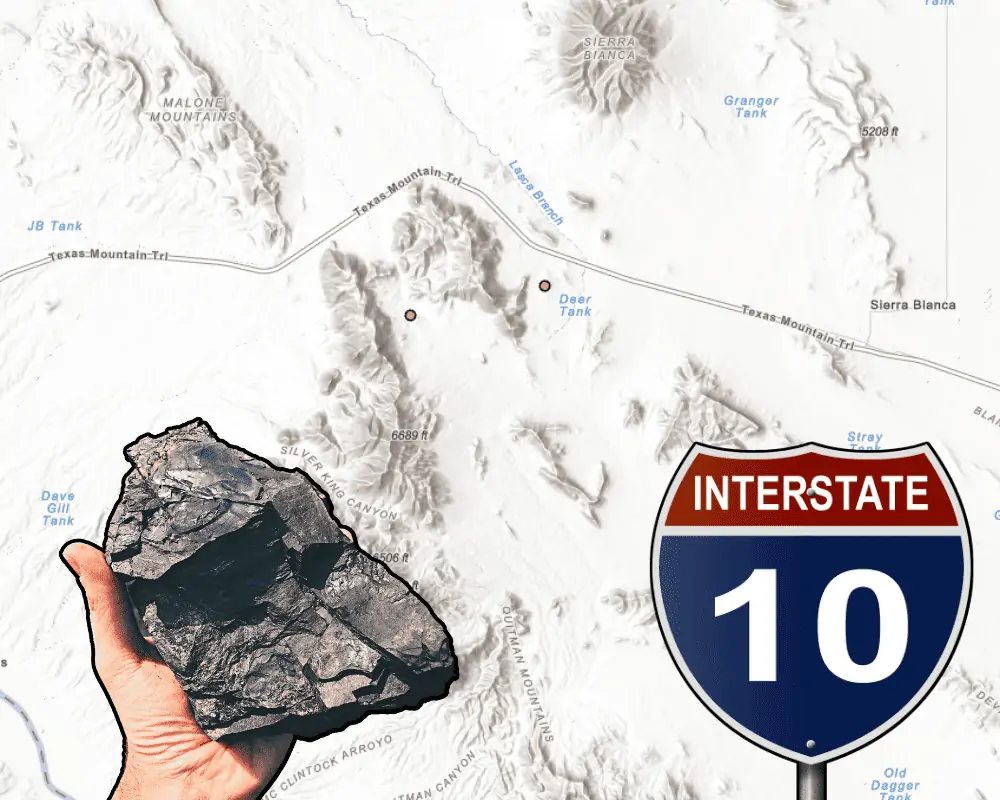
Both turned up gold in small amounts when they were active, although zinc was their primary mineral.
According to a 1927 University of Texas geological survey, there is at least one fissure vein which gold is sourced from in the area.
Although keep your eyes peeled for some volcanic rock while panning for gold.
Intrusive rocks are well known to have gold in their makeup; better yet, they’re abundant in the northern Quitman Mountains.
Llano River Gold Panning
Llano River is the best spot to pan for gold in Texas. Ask anyone!
Or at least the most popular.

The Llano River is a feeder of the Colorado River (it does not flow through Colorado) and stretches 105 miles.
In the 1890s, a gold ore deposit was discovered within Llano county, leading to the opening of the Heath Mine.
Twenty years later, a 1911 US geological survey cited Heath as the only prospect visited where gold was present in “sufficient quantity to warrant further prospecting“.
And it’s well known for being a good producer of gold for amateur prospectors searching along the cracks and crevices of the river.
But keep in mind that a good producer of gold in Texas isn’t really saying much.
Either way, there are plenty of spots to set up.
Shafter Mining District
After Llano River, the next best spot to begin your gold panning adventures in Texas is the Shafter Mining District.
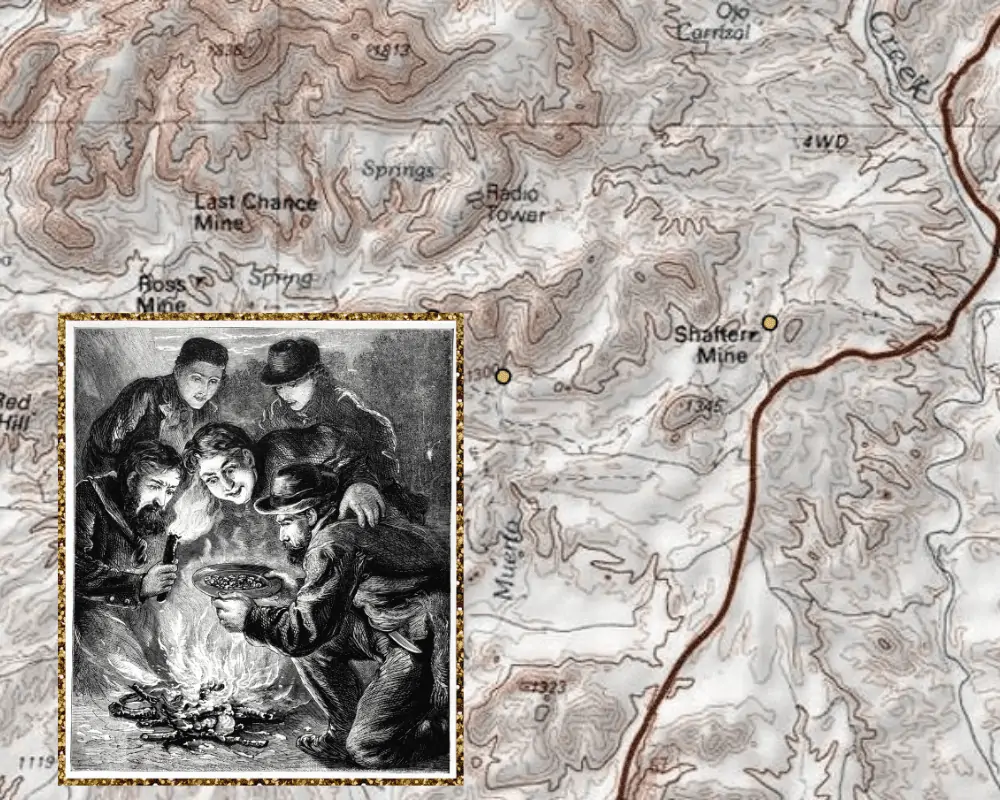
Shafter Mining was active from 1883 to 1952 and comprised 15 prospects in Presidio County that mined for silver and gold.
The bulk of the gold mined came from one prospect, the Presidio, which turned out more than 8,400 ounces of gold, or 73 percent of all the gold produced anywhere in Texas.
The Shafter Mining District was once a populous town of 4000 residents. But due to the drop in silver prices and insufficient gold to make mining profitable, Shafter became a ghost town.
No current census data is available, but several sources cite a total population of 11 to 30 people.
As for gold panning, take your pick of spots. Shafter runs along Cibolo Creek, the Rio Grande, and just south of Capote Creek.
Guadalupe Mountains
The Guadalupe Mountains rest near El Paso, Texas, and there is no shortage of reports of gold nuggets and smaller flakes being panned from the streams flowing through these hills.

Whether it’s the nearby Pecos River or somewhere bordering the Guadalupe Mountains National Park, this is a spot to add to your gold panning list.
Not only for the genuine reported gold found but for the promise of what might be.
You see, dating back to the 1600s, there have been whispers of a lost gold mine in the Guadalupe Mountains.
More than whispers. It’s a real-life tale of treasure.
But a long winding story that starts with Native Americans leading Spaniards to an incredible source of gold. And ending with an old prospector, Old Ben Sublett, discovering that same hidden mine in the late 1800s.
Old Ben only shared the location of the gold with a few people throughout his life, including his son. But none of them could find it again after their first expedition to the mine.

Prospectors have searched every year since his death in 1892, to no avail.
So, among your travels to find the perfect place to pan for gold, keep this Texas destination in your thoughts.
Honey Creek
Honey Creek, known to the Spanish colonists as San Miguel, is a water source in south central Llano County with a reported history of precious metals nearby.
In the mid-1700s, Spanish settlers sent reports back home of mineral deposits found, mainly consisting of silver and some gold.
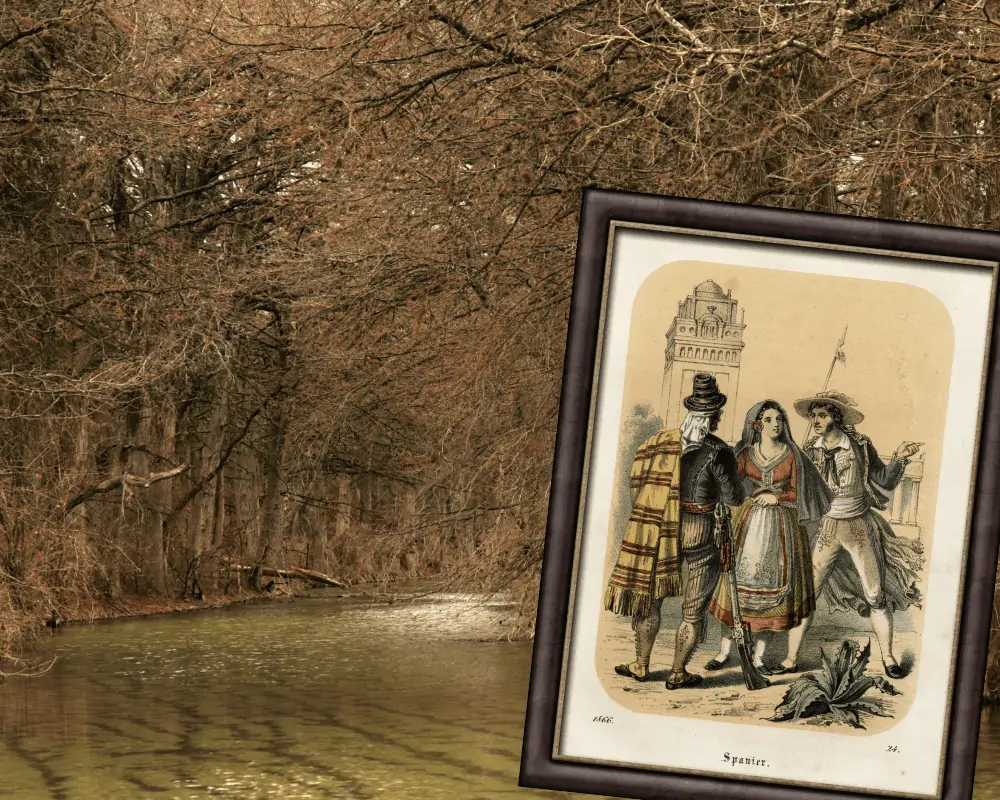
It was said that the vast amount of mineral resources discovered was so expansive that it warranted a large settlement to mine the silver and gold.
Whether this was true or just a ruse to gain help against the constant dangers presented by Native American soldiers, no one can say for sure.
But Honey Creek is still a popular spot to test your metal against the Texas Hill Country.
Guadalupe River
Guadalupe River, not to be confused with the Guadalupe Mountains, runs from central Texas near Kerrville to the Gulf of Mexico, some 230 miles southeast.
It begins just an hour south of Llano and even closer to Walnut Creek, another Texas locale popular for gold panning.
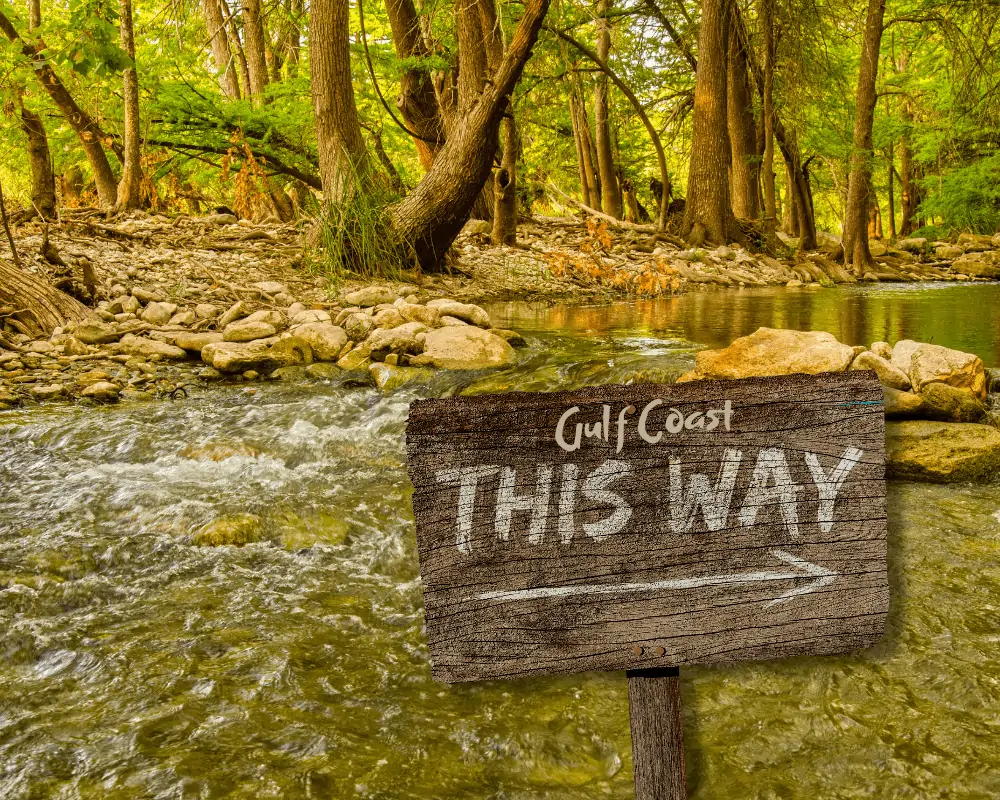
While Guadalupe River isn’t a significant historical site of gold discovery, some local prospectors have found gold nuggets more recently.
It’s the most prominent river in Texas and has many reservoirs, waterfalls, and dams along its path.
So, whether you live along the Gulf Coast or further inland near central Texas, the Guadalupe River has a spot for you to pan gold from morning to night.
What Is the Best Place to Pan for Gold in Texas?

Given the recent gold activity in Texas, the best place to pan is the Llano River.
In years past, Shafter would have been the clear-cut winner, but modern-day prospectors have had more success in Llano County.
Conclusion
It may seem like a trip out of state might be worth it, but don’t despair. There are still plenty of places to pan for gold in Texas.
You won’t strike it rich unless you find one of those hidden gold mines.
But you can certainly have some fun, make a little money, and find that thrill that only a bit of gold can give you.
So prospectors, do your research and pick your spot. The gold in Texas waits for you and your pan!




